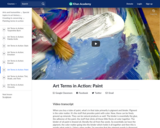
Created by The Museum of Modern Art.
- Subject:
- Art History
- Creative and Applied Arts
- Material Type:
- Lesson
- Provider:
- Khan Academy
- Provider Set:
- Museum of Modern Art
- Author:
- Museum of Modern Art
- Date Added:
- 08/10/2021

Created by The Museum of Modern Art.
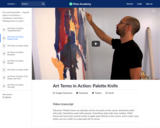
Created by The Museum of Modern Art.
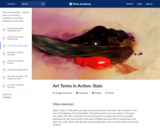
Created by The Museum of Modern Art.
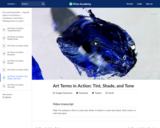
Created by The Museum of Modern Art.

Created by The Museum of Modern Art.

Migration is central to human experience, and art history reflects that.
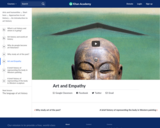
Empathy is a term we hear a lot, but what does it mean and how does it work? Looking back through art history, we find many moments when art has allowed us to share in the feelings of others, from Maya Lin's Vietnam Veterans Memorial, to representations of the Buddhist deity Jizō Bosatsu, along with the Röttgen Pietà, Guáman Poma's First New Chronicle and Good Government, the ink drawings of Chittaprosad and Zainul Abedin, the work of Ghana Think Tank, and more.
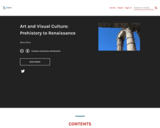
This book is a cloned version of Introduction To Art by Muffet Jones, published using Pressbooks under a CC BY (Attribution) license. It may differ from the original.
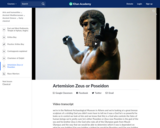
Artemision Zeus or Poseidon, c. 460 B.C.E., bronze, 2.09 m high, Early Classical (Severe Style), recovered from a shipwreck off Cape Artemision, Greece in 1928 (National Archaeological Museum, Athens). Speakers: Dr. Beth Harris and Dr. Steven Zucker. Created by Steven Zucker and Beth Harris.
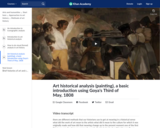
Francisco de Goya, Third of May, 1808, 1814, oil on canvas, 266 x 345.1 cm (Museo del Prado. Madrid). Created by Beth Harris and Steven Zucker.
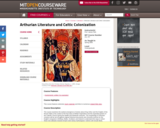
Studies the relation between imaginative texts and the culture surrounding them. Emphasizes ways in which imaginative works absorb, reflect, and conflict with reigning attitudes and world views. Instruction and practice in oral and written communication. Topic for Fall: Ethical Interpretation. Topic for Spring: Women Reading, Women Writing. The course examines the earliest emergence of stories about King Arthur and the Knights of the Round Table in the context of the first wave of British Imperialism and the expanded powers of the Catholic Church during the twelfth and thirteenth centuries. The morphology of Arthurian romance will be set off against original historical documents and chronicle sources for the English conquests in Brittany, Wales, Scotland, and Ireland to understand the ways in which these new attitudes towards Empire were being mythologized. Authors will include Bede, Geoffrey of Monmouth, ChrĚŠtien de Troyes, Marie de France, Gerald of Wales, together with some lesser known works like the Perilous Graveyard, the Knight with the Sword, and Perlesvaus, or the High History of the Holy Graal. Special attention will be paid to how the narrative material of the story gets transformed according to the particular religious and political agendas of each new author.
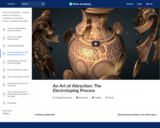
Tiffany and Company’s famous Bryant Vase was meticulously crafted by highly skilled artisans—among them, Augustus Saint-Gaudens and Eugene J. Soligny—who worked the silver for more than a year. Curator Ellenor Alcorn describes how Tiffany then used the fascinating nineteenth-century process of electrotyping to create presentation copies. View this work on metmuseum.org. Created by The Metropolitan Museum of Art.

This seminar introduces, through studio projects, the basic principles regarding the use of color in the visual arts. Students explore a range of topics, including the historical uses of color in the arts, the interactions between colors, and the psychology of color.
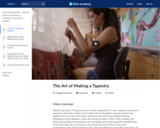
Learn how tapestries were made in the time of Louis XIV and are still made today. Explore the process of tapestry weaving at the Gobelins Manufactory in Paris, where historical techniques dating to the time of Louis XIV are used to make contemporary works of art. Video chapters: Introduction - 0:04 Designing a Tapestry - 1:08 Colorful Threads - 2:17 Preparing a Loom - 4:36 Weaving - 6:15 This video was produced in conjunction with the exhibition "Woven Gold: Tapestries of Louis XIV," on view at the Getty Center, December 15, 2016–May 1, 2016. http://www.getty.edu/art/exhibitions/french_tapestries/.

Introduction to the art of lighting.

The Art of the Probable" addresses the history of scientific ideas, in particular the emergence and development of mathematical probability. But it is neither meant to be a history of the exact sciences per se nor an annex to, say, the Course 6 curriculum in probability and statistics. Rather, our objective is to focus on the formal, thematic, and rhetorical features that imaginative literature shares with texts in the history of probability. These shared issues include (but are not limited to): the attempt to quantify or otherwise explain the presence of chance, risk, and contingency in everyday life; the deduction of causes for phenomena that are knowable only in their effects; and, above all, the question of what it means to think and act rationally in an uncertain world. Our course therefore aims to broaden students’ appreciation for and understanding of how literature interacts with--both reflecting upon and contributing to--the scientific understanding of the world. We are just as centrally committed to encouraging students to regard imaginative literature as a unique contribution to knowledge in its own right, and to see literary works of art as objects that demand and richly repay close critical analysis. It is our hope that the course will serve students well if they elect to pursue further work in Literature or other discipline in SHASS, and also enrich or complement their understanding of probability and statistics in other scientific and engineering subjects they elect to take.
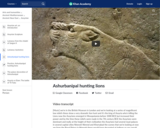
Ashurbanipal Hunting Lions, gypsum hall relief from the North Palace, Ninevah, c. 645-635 B.C.E., excavated by H. Rassam beginning in 1853 (British Museum). Speakers: Dr. Steven Zucker & Dr. Beth Harris

This resource is a modification of the Washington Models for the Evaluation of Bias Content in Instructional Materials (2009) that is made available through OER Commons under a public domain license. This resource attempts to both update the content with more contemporary vocabulary and also to narrow the scope to evaluating still images as they are found online. It was developed as a secondary project while working on a BranchED OER grant during summer 2020. It includes an attached rubric adapted from the Washington Model (2009).
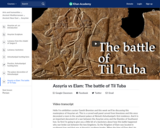
The battle of Til Tuba reliefs are among some of the great masterpieces of ancient Assyrian art. The movement and details are truly stunning. That said, the scenes actually being depicted are anything but easy on the eye. Join curator Gareth Brereton as he walks you through the reliefs that once decorated the last great king of Assyria's royal palace. WARNING: includes scenes of drowning, flaying and wearing your deceased leader's head as a necklace. DOUBLE WARNING: includes scenes of extreme royal hat misplacement. The BP exhibition I am Ashurbanipal: king of the world, king of Assyria 8 November 2018 – 24 February 2019
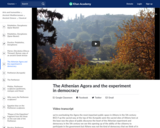
Speakers: Dr. Steven Zucker and Dr. Beth Harris. Created by Steven Zucker and Beth Harris.